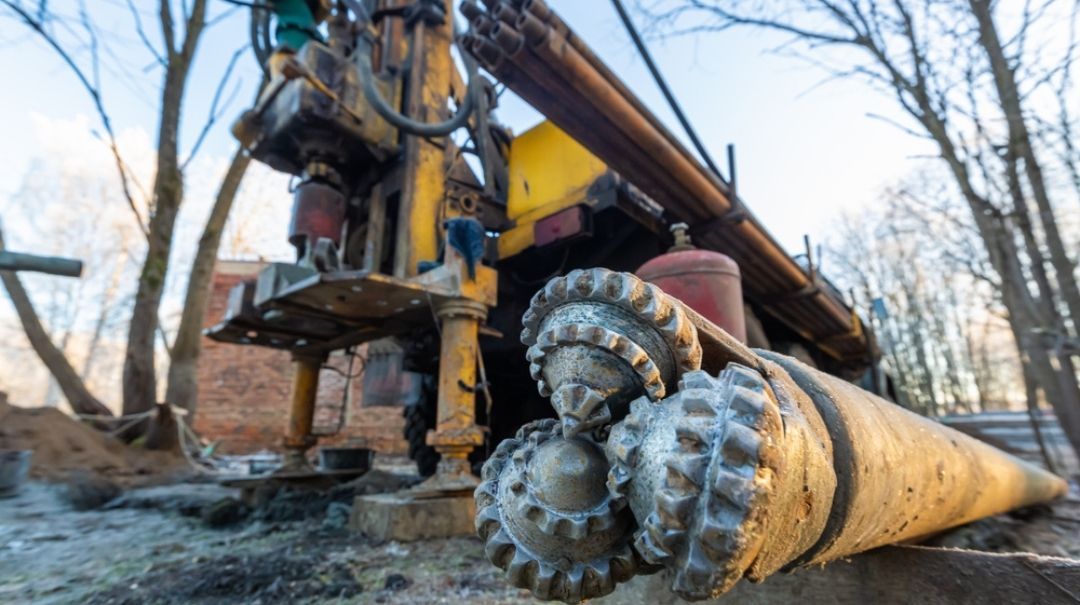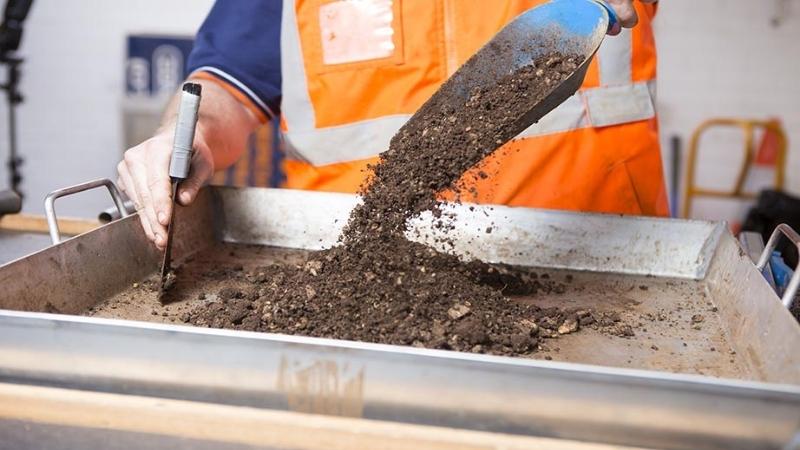Leading Geotechnical Companies in South Africa: Who You Ought to Know
Leading Geotechnical Companies in South Africa: Who You Ought to Know
Blog Article
Exploring the Interdisciplinary Nature of Geotechnical Design and Its Impact on Ground Renovation and Structure Design
The interdisciplinary nature of geotechnical engineering plays a vital role in shaping ingenious ground improvement methods and structure design methods. By integrating understandings from structural, environmental, and geological disciplines, geotechnical designers are equipped to address complicated soil habits and site-specific obstacles. This collaborative approach not just boosts the effectiveness of strategies such as soil stablizing and vibrant compaction but likewise makes certain that projects comply with sustainability principles. What effects does this interdisciplinary harmony have for future developments in the field, particularly in the context of arising construction innovations?
Overview of Geotechnical Engineering
Geotechnical design is a critical branch of civil design that concentrates on the habits of planet products and their interaction with frameworks. This technique encompasses the research of rock, dirt, and groundwater, intending to understand their residential or commercial properties and exactly how they affect the performance of civil design tasks. Geotechnical engineers evaluate the hydraulic and mechanical habits of these materials to guarantee the stability and security of structures such as structures, bridges, and preserving wall surfaces.
The scope of geotechnical design includes site investigations, dirt sampling, and screening, as well as evaluation of soil auto mechanics and rock auto mechanics. Engineers use advanced strategies to review ground conditions, identify possible dangers, and style effective ground renovation services. This might include approaches such as soil stablizing, grouting, and making use of geosynthetics, which enhance the stamina and toughness of the ground.
Moreover, geotechnical design plays a vital function in structure design, determining proper structure types based on dirt features and packing problems. By including rigorous testing and evaluation, geotechnical engineers contribute substantially to the sustainability and strength of infrastructure, making sure that frameworks can withstand operational and environmental anxieties in time.
Key Interdisciplinary Relationships

Furthermore, ecological engineering plays an important duty in assessing the effect of geotechnical tasks on the surrounding ecological community. This partnership is essential for establishing sustainable practices that lessen environmental degradation during excavation or ground enhancement procedures.
Moreover, the integration of geotechnical engineering with geology improves the understanding of subsurface problems, helping with more precise website characterizations (all about geotechnical engineering). This partnership help in risk analysis, specifically in locations susceptible to landslides or seismic task, thereby informing risk mitigation techniques
Finally, improvements in technology have led to interdisciplinary collaboration with data scientific research and geoinformatics. These areas add to improved modeling and evaluation techniques, permitting a lot more specific predictions of soil actions under various conditions. Hence, the interconnectedness of these self-controls enriches geotechnical engineering, promoting advancement and effectiveness in foundation layout and ground enhancement.
Ground Enhancement Strategies
Ground enhancement techniques are essential techniques used to improve the engineering buildings of dirt, thereby boosting its load-bearing capability and stability. These techniques are particularly crucial in areas where natural dirt conditions are poor for sustaining structural loads or where ecological aspects might endanger soil stability.
Common ground improvement approaches consist of soil compaction, which raises thickness and minimizes void spaces, and grouting, which includes infusing materials right into soil to fill up gaps and bind fragments together - address all about geotechnical engineering. Other strategies include the installation of soil nails and supports, which provide added support, and using geosynthetics to strengthen dirt structures. Deep visit their website blending methods, such as soil-cement columns, can likewise significantly boost the stamina and stiffness of weak soils
Furthermore, dynamic compaction and vibro-replacement methods are commonly employed to improve soil residential properties in situ. These methods can minimize concerns related to settlement and liquefaction, especially in seismic areas. By utilizing a mix of these innovative methods, geotechnical designers can properly address site-specific obstacles, making sure that the structure systems will certainly execute adequately under expected loading conditions, therefore adding to general job success.
Structure Style Factors To Consider
Efficient foundation design considerations are important for the durability and security of frameworks. A properly designed structure has to sufficiently sustain the tons of the structure while fitting dirt problems, environmental elements, and prospective adjustments gradually. Key elements include soil bearing capability, settlement qualities, and groundwater conditions.
Comprehending the soil profile via geotechnical investigations is important, as it notifies the option of structure type-- be it shallow, deep, or specialized methods such as heap structures or floor covering foundations. The anticipated lots, consisting of real-time, dead, and ecological tons, have to be properly computed to make sure the foundation can stand up to potential failure mechanisms, such as gliding, reversing, or extreme settlement.
Moreover, factors to consider for frost deepness, seismic activity, and possible soil liquefaction in seismic areas are important. Additionally, drainage and dampness control should be integrated into the foundation design to mitigate issues associated with hydrostatic pressure and soil disintegration.
Cooperation among engineers, engineers, and geotechnical professionals is crucial to develop a thorough foundation design that not just see page satisfies governing requirements but additionally makes certain the long-term efficiency and security of the structure. Inevitably, thorough planning and innovative remedies are required to resolve the complexities fundamental in structure style.
Study and Ideal Practices

One notable instance research includes using deep dirt mixing in a skyscraper task in a seismic zone. This strategy significantly improved the dirt's strength and security, permitting a safer and extra efficient foundation system (all about geotechnical engineering). The task highlighted the relevance of selecting ideal ground renovation techniques based on site-specific conditions, consisting of soil kind and loading needs
Another example is the application of vibrant compaction for improving the bearing ability of weak dirts under an industrial center. This approach effectively reduced negotiation issues and boosted overall website performance, showing the effectiveness of integrating standard engineering exercise with contemporary innovation.
Best practices originated from these situation studies stress the necessity of detailed website investigations, partnership among multidisciplinary groups, and the consolidation of innovative modeling devices. By taking on these lessons, geotechnical engineers can optimize foundation styles and ground renovation strategies, inevitably resulting in more secure and more lasting construction outcomes.
Final Thought
In conclusion, the interdisciplinary nature of geotechnical engineering considerably enhances ground renovation and structure design. By integrating concepts from different engineering self-controls, customized methods are established to deal with details obstacles related to soil properties and ecological impacts.
The extent of geotechnical engineering includes site examinations, soil sampling, and testing, as well as analysis of soil mechanics and rock auto mechanics. The relationship in between geotechnical design and structural design is particularly crucial, as the efficiency of frameworks is heavily affected by soil actions and homes.Typical ground improvement techniques include dirt compaction, which increases density and minimizes void spaces, and grouting, which entails injecting products right into dirt to fill gaps and bind particles together. Other techniques include the setup of dirt nails and anchors, which give additional support, and the use of geosynthetics to enhance dirt frameworks. A well-designed structure has to adequately sustain the lots of the structure while accommodating soil conditions, ecological variables, and potential modifications over time.
Report this page